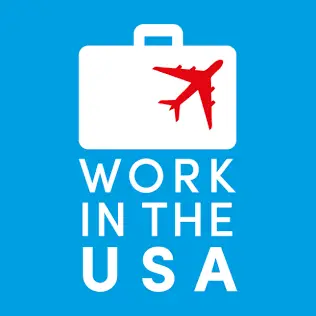Immigrants’ experiences and perspectives on campuses around the country help broaden how others see the world, inspiring new approaches to challenging problems. Their diverse viewpoints and experiences improve and broaden the classroom experience.
However, many immigrants may struggle to gain access to these educational possibilities. Financial constraints frequently make it difficult for immigrant families to afford college tuition, and navigating the financial assistance system can be tough, especially for those unfamiliar with U.S. resources and application processes. Scholarships are one way to help overcome these difficulties. They help open doors to opportunities and, in many cases, are the key to demonstrating that those doors exist at all.
If you’re honestly looking for ways to pay for your education, we recommend looking into scholarships for immigrant students. Scholarships for immigrants enable immigrant students to achieve the American dream.
Let’s look into these USA scholarships for immigrants opportunities together. You’ll also find useful application strategy advice and information on other scholarship opportunities.
USA scholarships for immigrants
1. ASA Minority Fellowship Program
Scholarships are available to students from underrepresented groups, such as Black/African American, Latinx, American Indian or Alaska Native, and Asian or Pacific Islander students. Students must be pursuing a PhD degree in Sociology. The American Sociology Association (ASA) will offer $18,000 each year of study.
2. Dream.US Scholarship: A National Scholarship
A renewable scholarship with a stipend for DACA and TPS recipients. This grant will cover your tuition and expenses. You may also be given a stipend to help pay for your books and transportation. You must intend to enroll full-time in an associate or bachelor’s degree program for the first time. High school graduates (or HSE diploma recipients) must have a GPA of 2.5 or above. Community college grads must have a 3.0 GPA or better.
3. Hispanic Scholarship Fund
HSF selects 10,000 students per year. HSF Scholars have access to a variety of support services, including career counseling, mentoring, leadership development, knowledge building, and wellness training. It also provides access to certain internship and job opportunities with HSF’s corporate partners.
4. Native Forward Scholars’ Fund
Scholarships are available to American Indians and Alaska Natives who are members of federally recognized or state-recognized tribes in the United States. Individuals who can prove they are descendants of American Indian or Alaska Native descent from Tribes are also eligible for financing from the Native Forward Scholars Fund.
5. District of Columbia, Maryland, and Virginia
Scholarship for students born outside the United States or with both parents born outside the United States who intend to study full-time in an authorized public institution or university. Applicants must be graduating seniors in high school or recent GED graduates living in the District of Columbia, Maryland, or Virginia. Scholarships range from $5000 to $20,000 based on financial need. Esperanza also gives kids mentors to assist them with college, internships, and starting a career.
6. Minority Teacher Education Scholarship
The Florida Fund for Minority Teachers offers this fellowship. Students must be residents of Florida and identify as African American/Black, Hispanic/Latino, Asian American/Pacific Islander, or American Indian/Alaska Native. Students must be juniors, seniors, or graduates enrolled in state-approved teacher education programs at FFMT-affiliated universities/colleges.
7. HIAS Chicago
HIAS awards academic scholarships to Jewish students who came or whose families immigrated to the Chicago region with the help of HIAS Chicago or who used HIAS’ immigration and citizenship services while in the United States. Several scholarships are available, including the Benton-Bernstein Scholarship for individuals entering the helping professions and the Tilly Warshaw Scholarship for high school graduates.
Scholarship Application Strategy
With so many scholarships available to immigrant students and a demanding schedule to manage, a well-planned method for researching and applying for scholarships can save you time and boost your chances of success. Here’s a step-by-step guide:
● Start with research.
Begin your scholarship search online, focusing on programs for immigrant students. Look for scholarships from organizations that help recent immigrants, as well as those for students from specific national, ethnic, or regional origins, such as Hispanic students (including DACA recipients), Asian Americans and Pacific Islanders, and even undocumented students.
Aside from immigrant-focused scholarships, try applying for grants that highlight academic accomplishment, athletic or musical talent, special abilities, and volunteer or community service.
Casting a wide net can find unexpected opportunities, so add any scholarships that match your skills and interests.
International, undergraduate, and community college students can all benefit from contacting their school’s financial aid office for support and guidance.
● Do not overlook little scholarships.
Full-tuition scholarships are great, but they are frequently competitive and limited. Small rewards, on the other hand, can swiftly accumulate and cover a wide range of educational expenses. Apply to as many scholarships as possible that match your qualifications.
● Manage and track deadlines.
Once you’ve compiled a list of scholarships, sort them by deadline and construct a calendar or timeline to keep track. Submitting applications early will improve your chances, since some scholarship programs assess applications on a rolling basis, meaning funding may be awarded to early candidates before the deadline.
● Create strong applications.
Take the time to thoroughly complete all of the needed sections for each scholarship. Customize your application essays to illustrate how your immigrant history, unique abilities, and experiences fit into the scholarship’s objective. Strong, early applications stand out and have a higher chance of success.
● Keep applying.
Remember that scholarship organizations have a limited amount of money available each year. Once that pool is depleted, no additional rewards will be offered until the next application season.




